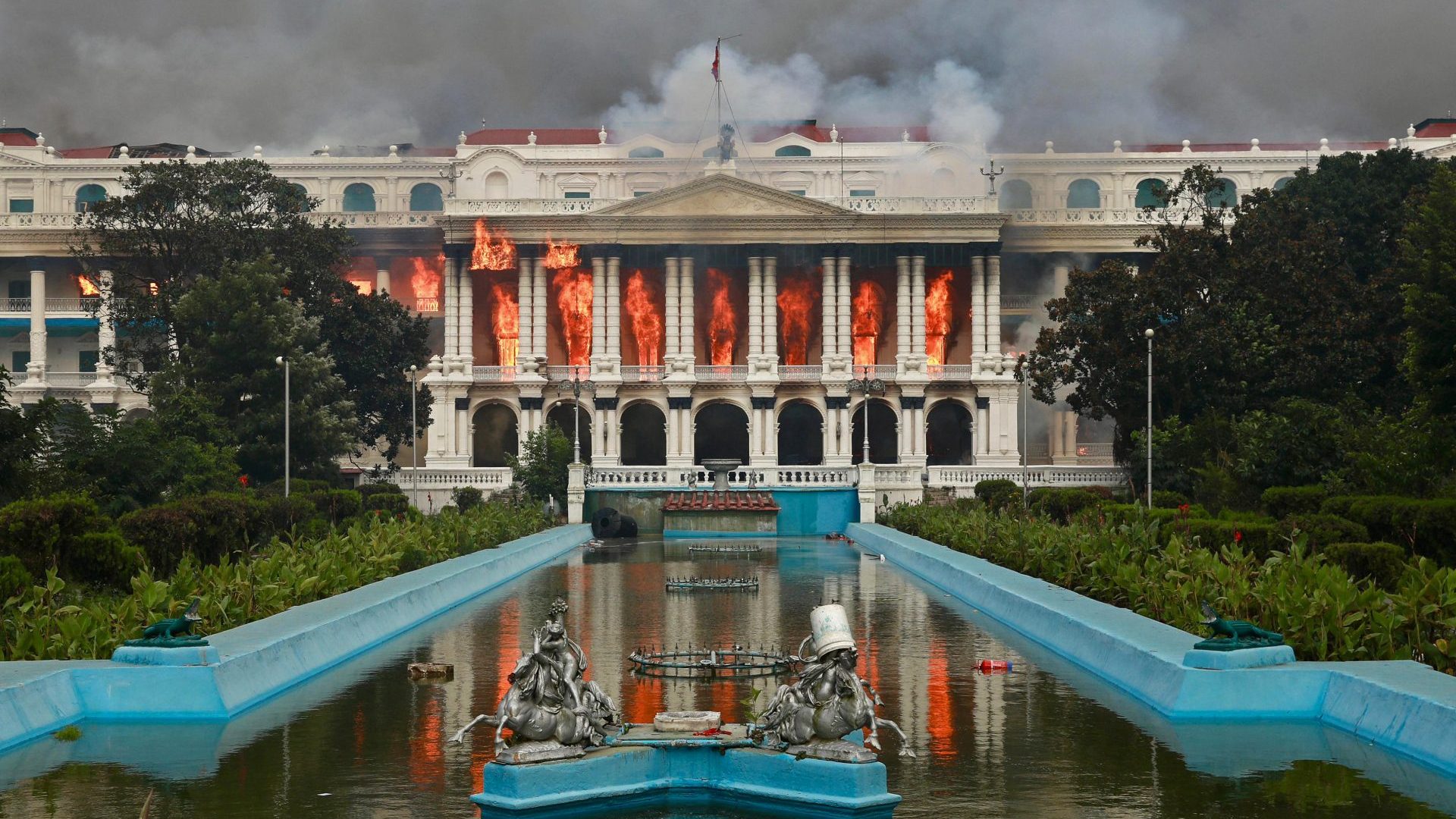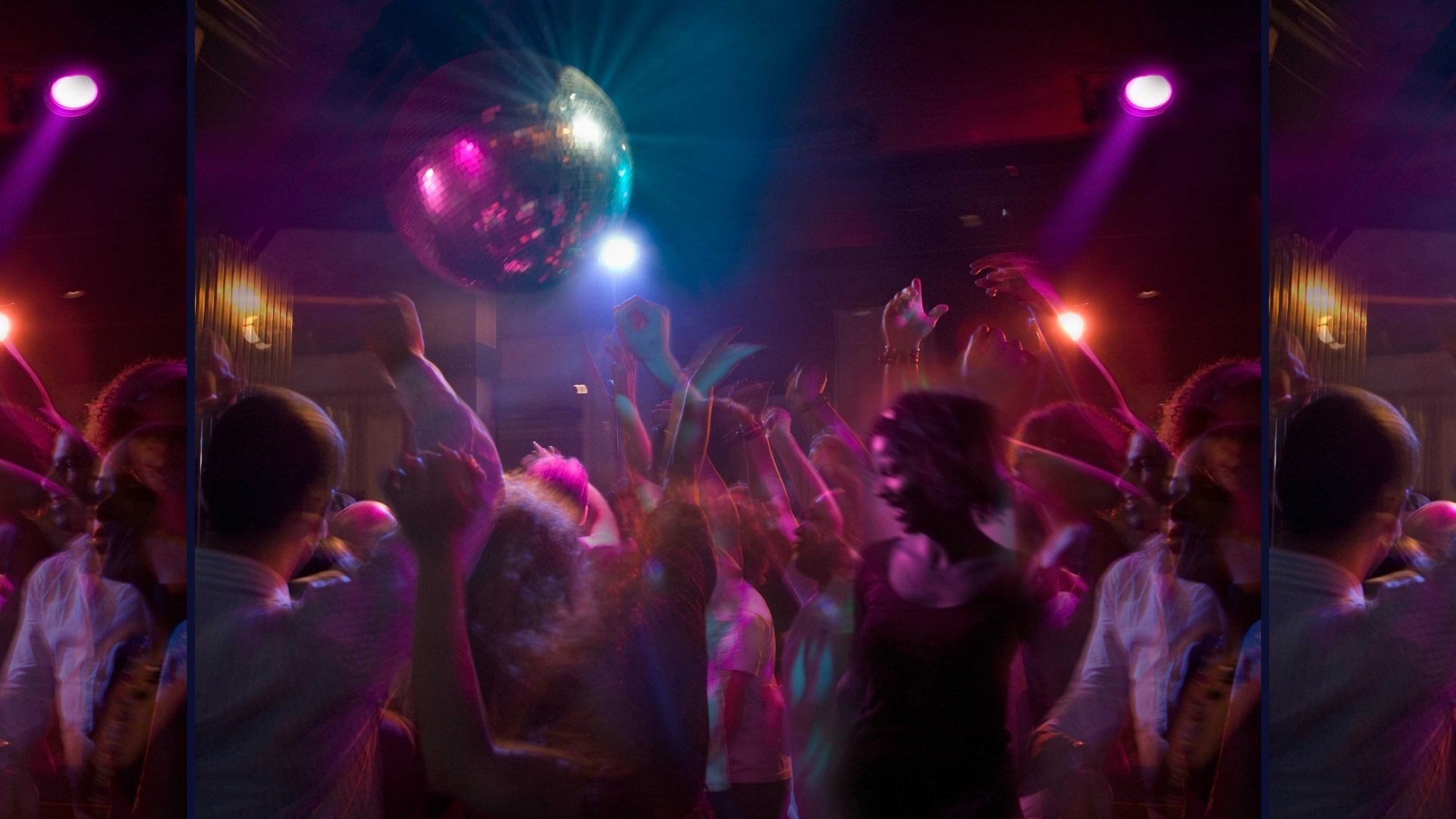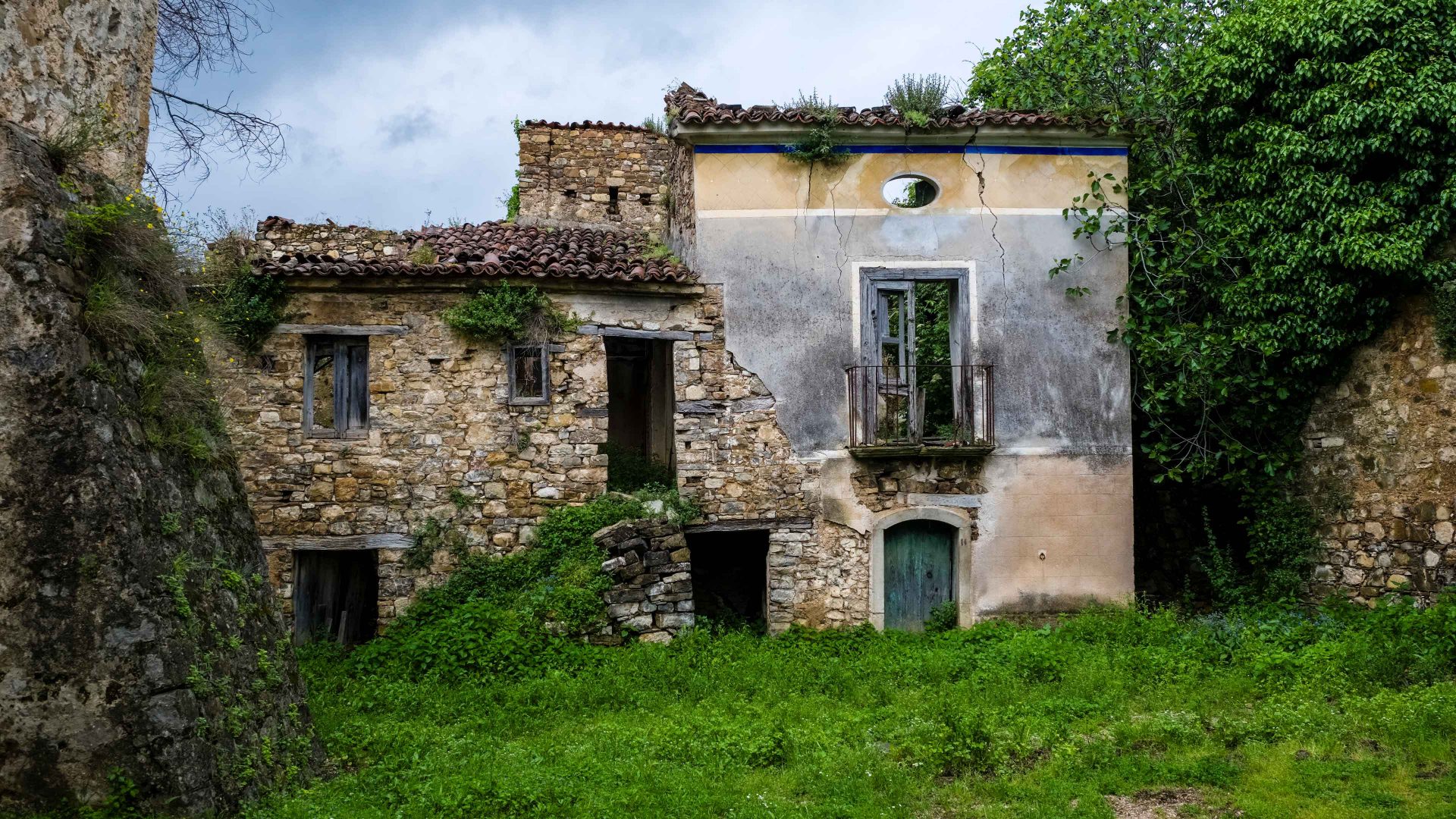The parliament building had been set on fire by protesters, and the burnt cars had been reduced to blackened heaps, their frames twisted like carcasses. A motorcycle appeared oddly intact, its blue paint shining in the autumn sun. When it got closer, I saw its rear had been charred by the flames.
Bricks had been punched out of the walls, leaving holes wide enough for a person to slip through – it looked as if the building had been bombarded. Someone had spray-painted “Hatyara” on the wall. It means “murderer”. Someone else had written “Rest in peace, brave student souls.” A clean-up crew had already passed through, but fragments of brick still littered the pavement. At the main gate two guards stood watch. Behind them, the facade of the parliament building was streaked with soot.
Across the street, gunfire had shattered windowpanes and left jagged holes in the walls, and office chairs and tables, once the furniture of order, had been dragged out and set on fire. Walking past, I imagined the crackling of fire, the rush of flames that must have consumed them and the cheers that likely accompanied their destruction. Now they sat in silence, relics of two days of mayhem from which Nepal will take years to recover. In total, 72 people were killed.
The protests had begun on September 9 with a peaceful march from Maitighar Mandala in downtown Kathmandu. The Gen Z protesters sang, danced and livestreamed their protest, denouncing leaders who are old enough to be their grandfathers. By the time the march reached parliament, tens of thousands had joined. When the crowd broke police barricades, some stormed the parliament building. At this point the police opened fire, killing 19 young people, most of them in their 20s.
Fury spread through the Kathmandu Valley and cities across the country. Former prime ministers’ houses were ransacked. Singha Darbar, a century-old palace housing government ministries, was set ablaze. Even the Supreme Court building was burned.
Prime Minister KP Sharma Oli resigned. The army stepped in and, in an extraordinary turn, summoned the Gen Z leaders to negotiate. On Discord, a gaming app, protesters voted for Sushila Karki, a former chief justice and anti-corruption crusader, to lead an interim government. At 73, she now heads a technocratic government tasked with holding elections by early March 2026.
At least four journalists were also injured on that first day. Among them was Dipendra Dhungana, a photojournalist I know. I watched the video of him being carried away, blood streaming down his face as colleagues dragged him to safety.
After the first day’s killings, I stayed home on the city’s outskirts, following the news online. From my rooftop I could see the smoke rising in the distance. I later found it was coming from politicians’ houses. The inferno was so widespread that smoke blackened the Kathmandu sky. A friend told me he had stepped barefoot on to the roof of his new house and there was so much soot from the fires that his feet turned black.
Nepal is no stranger to upheaval. Since the end of the Maoist insurgency in 2006, the country has staggered from one crisis to another – arguments over the drafting of the new constitution, a devastating earthquake, a pandemic that destroyed tourism. Jobs remain scarce and many young people depart for Malaysia, the Gulf, or the west. There is a hollow sense that the system has failed these young people.
But this felt different. The scale of rage was unlike anything I have seen; the speed with which peaceful protest gave way to gunshots was terrifying and heartbreaking.
A week later, I visited the parliament compound. Inside the complex, the state-run bank that had been looted during the mayhem was open again. Protesters had smashed its windows and fled with wads of banknotes. Now customers queued in neat rows to deposit salaries or withdraw cash. The ordinariness of the scene felt almost surreal against the ruins outside.
There was something haunting in that juxtaposition: the slow, mundane pulse of daily life pressing on, side by side with the raw aftermath of fury. Kathmandu was already straddling two worlds – one still suspended in smoke and fire, the other stubbornly edging back towards normalcy.
Deepak Adhikari is an investigative journalist based in Kathmandu



